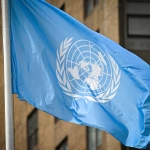Hejaz Railway Revival: A New Chapter for Regional Connectivity
The Historic Line Gets a Second Life: In a landmark step for both heritage and modern commerce, Türkiye, Syria and Jordan have formally agreed on the Hejaz railway revival, breathing new life into a line that once linked Istanbul to Mecca and Medina.
First built between 1900 and 1908 under Ottoman Sultan Abdulhamid II, the 1,750-kilometer route carried pilgrims, trade and ideas across continents. Today, the agreement signals more than nostalgia: it marks a fresh push to reconnect transport corridors, improve Türkiye’s access to the Red Sea, and reopen long-suspended roads through Syria.

The Agreement at a Glance:
At a tripartite meeting in Amman earlier this month, the three countries reached a preliminary memorandum of understanding (MoU) covering cooperation in transportation infrastructure.
Türkiye’s role: Assist in completing 30 kilometers of missing superstructure on the Syrian segment.
Jordan’s role: Assess technical capacity to support locomotive maintenance, repair and operation within Syria.
Joint studies: Explore ways to boost Türkiye’s access to the Port of Aqaba, opening stronger links to the Red Sea.
Road transport: Resume Türkiye–Jordan road routes via Syria after a 13-year suspension caused by the civil war.
Why the Hejaz Railway Revival Matters Now?
Reviving the line is more than heritage conservation; the Hejaz railway revival aligns with modern logistics needs lowering transport costs, unlocking tourism potential, and easing access to the Red Sea via Aqaba. For Türkiye, Syria, and Jordan, coordinated upgrades turn a historic route into a living trade corridor connecting Europe, the Levant, and the Gulf.

Cultural preservation: Protecting stations, viaducts and engineering feats built under Ottoman rule.
Economic value: Boosting freight movement and regional trade.
Tourism growth: Offering heritage journeys along routes of faith and history.
Strategic signaling: Showcasing regional cooperation after years of conflict and division.
From Past to Future:
Though damaged during World War I and later unrest, sections of the Hejaz Railway remain intact. Its revival blends conservation with commerce, restoring missing tracks while upgrading infrastructure for 21st-century use.
The project is not just symbolic. With Türkiye supporting construction, Jordan lending technical expertise, and Syria regaining regional links, the Hejaz railway revival could become a cornerstone of integration across the Middle East.
As Turkish Transport Minister Abdulkadir Uraloğlu explained:
“While preserving our region’s historical heritage, we are also establishing strong cooperation in international transport corridors.”
Conclusion:
The Hejaz railway revival shows how history and progress can move on the same track. If promises translate into action 30 km rebuilt in Syria, locomotives maintained through Jordan, and improved access to Aqaba the line will once again carry more than trains. It will carry trade, tourism, and trust, helping three nations rediscover the power of shared heritage and regional cooperation.
At Youth Diplomacy Forum, we celebrate initiatives like the Hejaz Railway Revival that honor the past while opening doors to a more connected future.
Source: Daily Sabah











